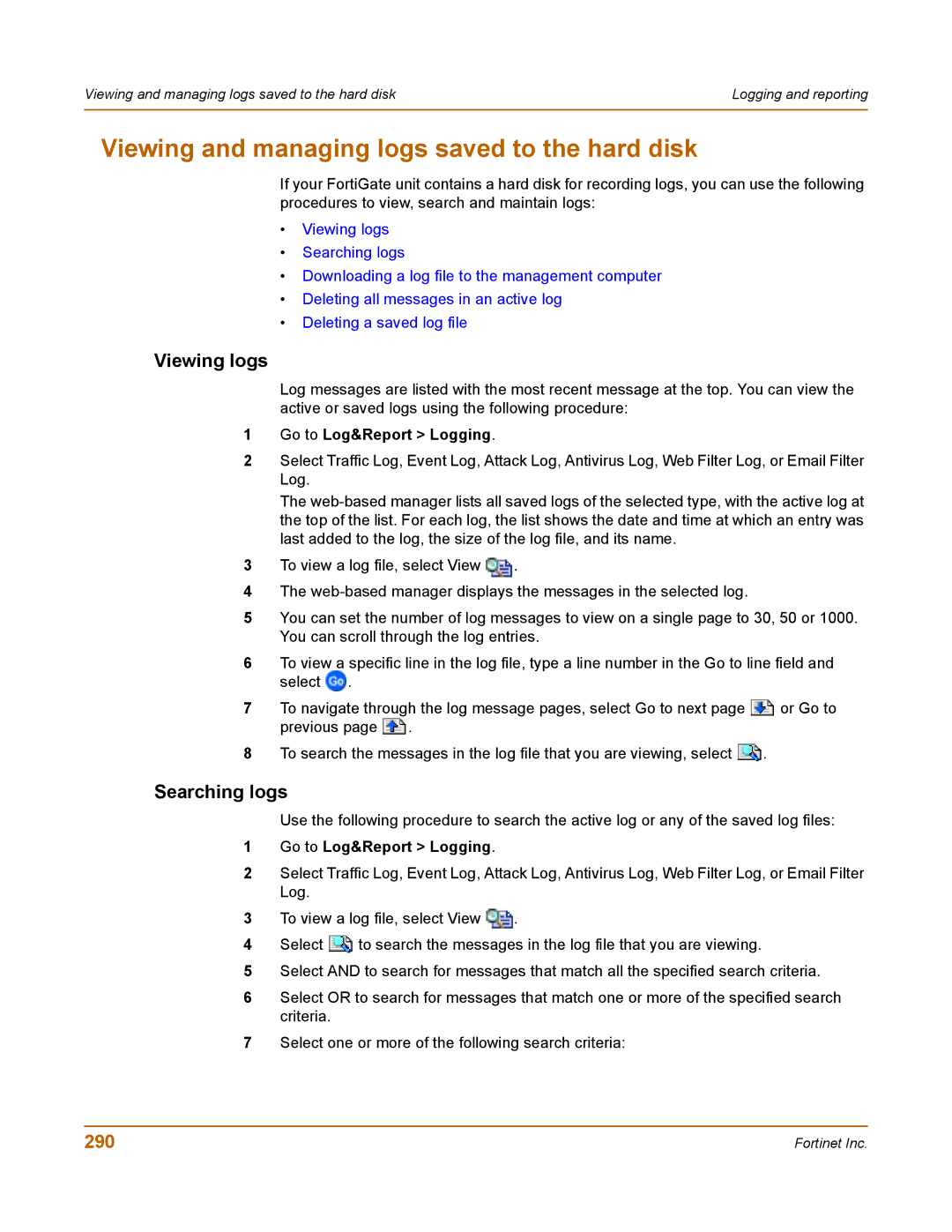Viewing and managing logs saved to the hard disk | Logging and reporting |
|
|
Viewing and managing logs saved to the hard disk
If your FortiGate unit contains a hard disk for recording logs, you can use the following procedures to view, search and maintain logs:
•Viewing logs
•Searching logs
•Downloading a log file to the management computer
•Deleting all messages in an active log
•Deleting a saved log file
Viewing logs
Log messages are listed with the most recent message at the top. You can view the active or saved logs using the following procedure:
1Go to Log&Report > Logging.
2Select Traffic Log, Event Log, Attack Log, Antivirus Log, Web Filter Log, or Email Filter Log.
The
3To view a log file, select View ![]() .
.
4The
5You can set the number of log messages to view on a single page to 30, 50 or 1000. You can scroll through the log entries.
6To view a specific line in the log file, type a line number in the Go to line field and select ![]() .
.
7To navigate through the log message pages, select Go to next page ![]() or Go to previous page
or Go to previous page ![]() .
.
8To search the messages in the log file that you are viewing, select ![]() .
.
Searching logs
Use the following procedure to search the active log or any of the saved log files:
1Go to Log&Report > Logging.
2Select Traffic Log, Event Log, Attack Log, Antivirus Log, Web Filter Log, or Email Filter Log.
3To view a log file, select View ![]() .
.
4Select ![]() to search the messages in the log file that you are viewing.
to search the messages in the log file that you are viewing.
5Select AND to search for messages that match all the specified search criteria.
6Select OR to search for messages that match one or more of the specified search criteria.
7Select one or more of the following search criteria:
290 | Fortinet Inc. |
